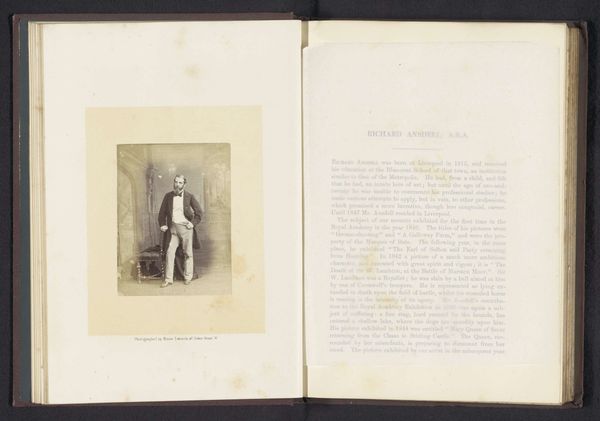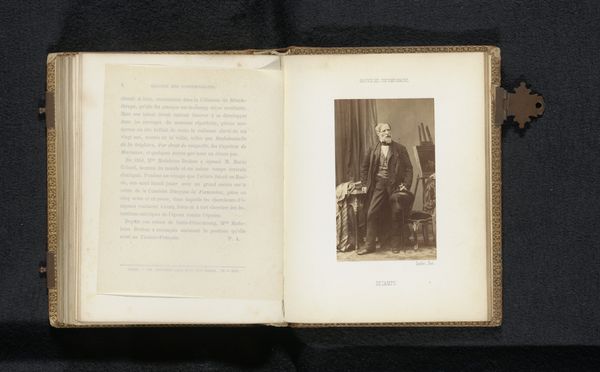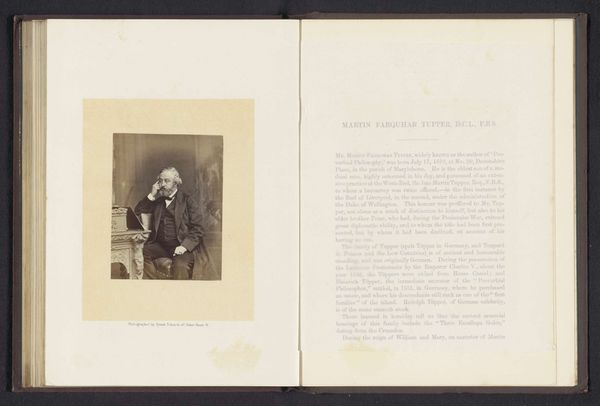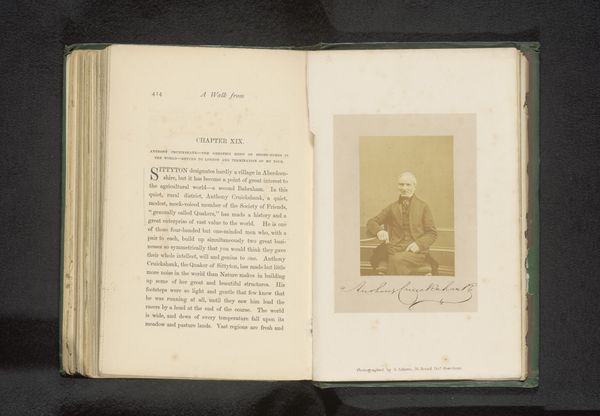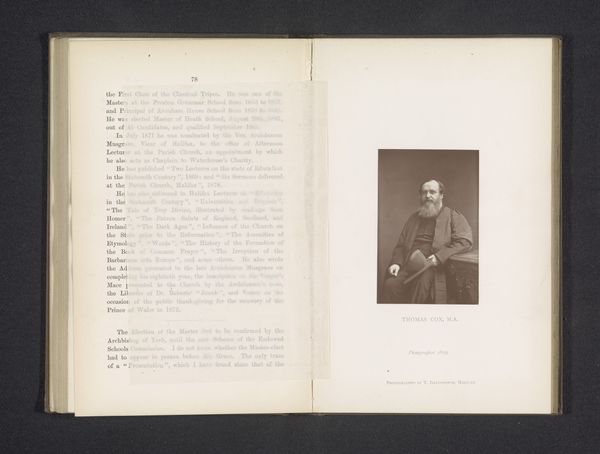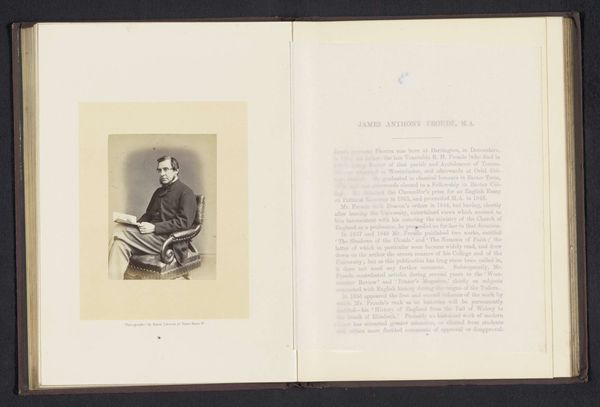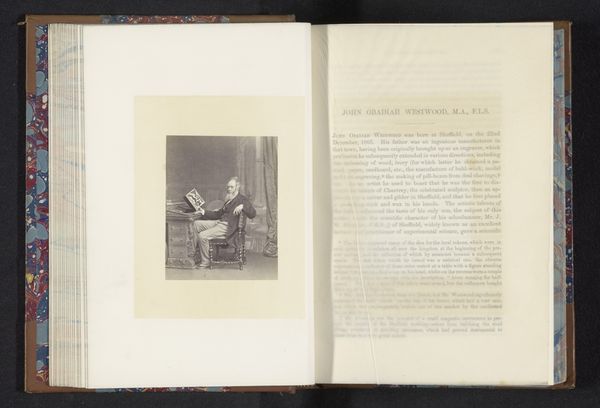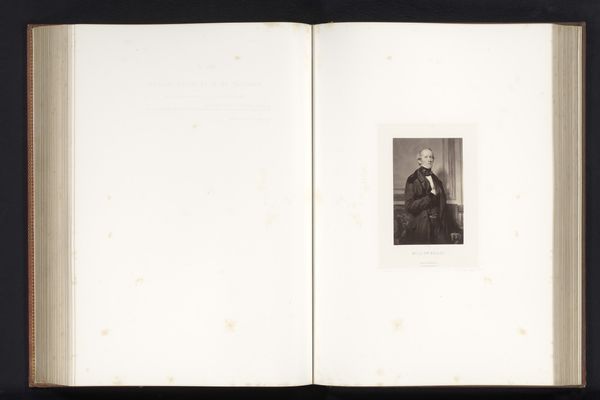
print, photography, albumen-print
#
portrait
# print
#
photography
#
albumen-print
Dimensions: height 89 mm, width 66 mm
Copyright: Rijks Museum: Open Domain
Editor: So, this is a portrait of John Bowring, made before 1868 by Ernest Edwards. It’s an albumen print – a photograph basically – mounted in an album. There’s a certain formality, almost severity, in his gaze. What can you tell me about this piece? Curator: Well, think about the time it was made. Photography was still relatively new, so posing for a portrait was a significant act. The subject’s attire and posture are very deliberate; notice how he is posed, seated, but formally upright, conveying dignity. And the choice of including this portrait within an album also has significance; it elevates the photograph, transforming it into something worthy of preservation and display. The cultural memory here relies on material form. Editor: That makes sense. It does seem quite staged. What's the importance of albums then? Is it merely just preservation? Curator: Preservation is certainly a key function. Consider how albums curated identities and narratives, especially during the Victorian era. This photograph is not just an image, it’s a statement – a visual representation carefully constructed and placed within a specific context to communicate status and legacy. And consider how the photograph, itself a relatively new technology, aided this project of legacy-building. Editor: That’s fascinating. So the photo and album combined helped form a historical record. Thanks so much for shedding light on that. Curator: My pleasure. It highlights how photographic images functioned within the wider cultural practices of the time. It encourages us to consider photographs as carefully composed records of historical, political, and social ideas.
Comments
No comments
Be the first to comment and join the conversation on the ultimate creative platform.


